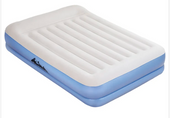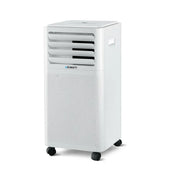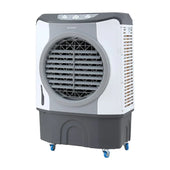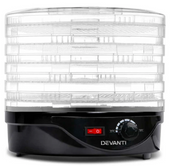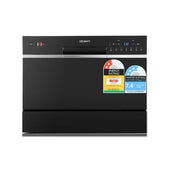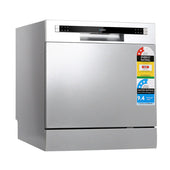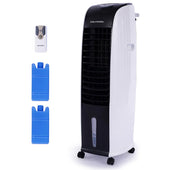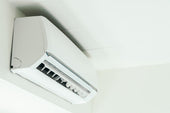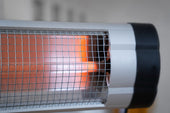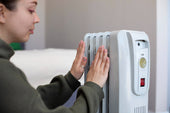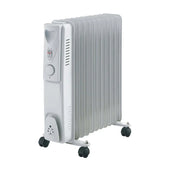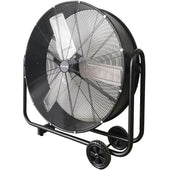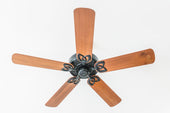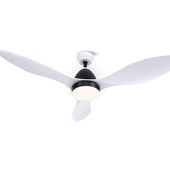Understanding the Importance of a Clean Shower Head
A clean shower head is vital for maintaining water flow efficiency and guaranteeing hygienic showers. Over time, mineral deposits, limescale, and bacteria can accumulate, clogging the spray nozzles and reducing water pressure. Poor water flow can lead to longer shower times, which wastes water and increases energy costs. Additionally, build-up may harbour mould and bacteria, leading to potential health risks. Regular cleaning prevents these issues and extends the lifespan of the shower head. By addressing such deposits, homeowners can enjoy consistent water coverage and improved cleanliness while promoting a healthier bathroom environment. Proper maintenance also enhances overall showering comfort.
Signs That Your Shower Head Needs Cleaning
A dirty shower head can lead to a noticeable decline in performance and hygiene. Here are some clear indicators that it requires attention:
- Reduced Water Pressure: If the water flow feels weaker than usual, build-up on the nozzles may be obstructing spray holes.
- Irregular Spray Patterns: Uneven sprays or water shooting in odd directions often occur due to blocked jets.
- Visible Build-Up: Accumulation of limescale, mineral deposits, or mould on the external surface is a strong sign.
- Discoloured Water: Rust or mineral deposits can lead to orange or discoloured water.
- Unpleasant Odours: A musty or unpleasant smell may indicate bacterial growth within the nozzle.
Ignoring these signs can compromise efficiency and hygiene. Regular inspection is essential to maintain performance.
Essential Tools and Materials for Cleaning Shower Heads
To achieve sparkling results when cleaning shower heads, the right tools and materials are crucial. Having these items ready makes the process efficient and hassle-free.
Tools
- Old toothbrush: A soft-bristled toothbrush is ideal for scrubbing away grime in crevices.
- Rubber gloves: These protect hands from exposure to cleaning agents.
- Small needle or pin: Useful for dislodging mineral clogs from water holes.
- Bucket or large bowl: Necessary for soaking the shower head.
Materials
- White vinegar: A powerful natural cleaner that breaks down lime and calcium deposits.
- Baking soda: Enhances vinegar’s cleaning effectiveness when combined.
- Microfibre cloth: Perfect for polishing the shower head after cleaning.
Equipping these items ensures thorough and easy shower head maintenance.
Preparing Your Shower Head for Cleaning
Before embarking on cleaning, ensuring the shower head is properly prepared is essential. At During Days, we recommend beginning by turning off the water supply to prevent accidental spills or leaks. Examine the shower head to determine whether it is detachable or fixed, as this will influence the cleaning method. For detachable models, carefully unscrew the head using a wrench if necessary, being cautious not to damage threading or fittings.
If the head is fixed, consider covering the surrounding wall or fixtures to protect them during the cleaning process. Keep required tools and materials nearby, such as a bucket, microfibre cloth, white vinegar, and a toothbrush. Proper setup ensures effective and efficient cleaning.
Step-By-Step Guide: How to Remove a Shower Head
Removing a shower head is an essential first step for thorough cleaning. Follow these instructions for a hassle-free process:
Tools Required:
- An adjustable wrench or pliers
- A soft cloth or rubber pad
- Teflon tape (optional)
Steps:
- Turn Off Water Supply Ensure the shower’s water is turned off to prevent leakage.
- Protect the Fixture Wrap the soft cloth/rubber pad around the base of the shower head to avoid scuffing.
- Unscrew the Shower Head Using the wrench or pliers, turn the fixture anti-clockwise while gripping firmly.
- Check for Damage or Blockages Inspect the shower head threads and pipe for any debris or wear.
- Set Aside the Shower Head Place it in a safe location before proceeding to clean.
Effective Cleaning Methods for Fixed Shower Heads
To clean a fixed shower head, begin by removing visible dirt and limescale. Use a soft brush or toothbrush to scrub the nozzles gently, loosening any clogged mineral deposits. For deeper cleaning, mix equal parts white vinegar and water in a plastic bag and secure it around the shower head with a rubber band. Ensure the nozzles are fully submerged and leave it for several hours or overnight. Remove the bag and allow water to run for a few minutes to flush any residue. For stubborn grime, use a toothpick to dislodge debris carefully without damaging the nozzles. Fixed shower heads benefit from regular maintenance to maintain optimal water flow and appearance.
Deep Cleaning Detachable Shower Heads for Optimal Results
To deep clean a detachable shower head, start by removing it from the shower arm as per the manufacturer's instructions. Place the shower head in a container filled with a solution of equal parts white vinegar and warm water. Soak it for at least 30 minutes to loosen limescale and mineral deposits. For tougher build-up, extend the soak to an hour or overnight.
After soaking, use an old toothbrush or a soft-bristle brush to scrub the nozzles and exterior gently. Pay special attention to clogged spray holes. Rinse the shower head thoroughly under warm water and dry it with a microfibre cloth before reattaching.
Natural Cleaning Solutions Versus Store-Bought Products
Natural cleaning solutions rely on everyday household items like white vinegar, baking soda, and lemon juice. These ingredients effectively dissolve mineral build-up and grime while being eco-friendly and inexpensive. For instance, soaking a clogged shower head in a combination of vinegar and water can naturally break down limescale without harsh chemicals.
In contrast, store-bought cleaning products are formulated with powerful agents designed to tackle stubborn deposits quickly. While they often save time, some may contain strong chemicals that can emit fumes or harm delicate finishes.
Choosing between natural and store-bought options depends on personal preferences, environmental concerns, and cleaning needs.
Tips for Maintaining a Clean Shower Head Regularly
- Rinse After Use: Encourage rinsing the shower head with warm water after each use to reduce soap and mineral buildup.
- Dry Surfaces: Implement wiping the shower head with a cloth to prevent water spots and mildew.
- Monthly Cleaning: Schedule regular deep cleans with vinegar or a gentle cleaning agent.
- Use Water Softener: Install a water softener to minimise hard water deposits.
- Inspect Frequently: Check for clogs or reduced water pressure to detect buildup early.
Proper maintenance prolongs the lifespan of your shower head and ensures consistent water flow.
Troubleshooting Common Shower Head Issues
Shower heads can develop issues over time due to mineral build-up, wear, or defects. If water flow decreases or becomes uneven, a clogged nozzle may be the culprit. Inspect the nozzles for debris or hard water deposits and clean them using a toothbrush or a pin. For leakage issues, check the connection between the shower head and the pipe; tightening it or replacing a worn-out washer can resolve the problem. If the water pressure remains low, verify that the shower arm isn't blocked. Regular cleaning and maintenance are essential to prevent recurring problems and ensure consistent performance from your shower head.
How Often Should You Clean Your Shower Head?
Shower heads should typically be cleaned every one to two months to maintain optimal water flow and reduce the build-up of mineral deposits, soap scum, and bacteria. The frequency may vary depending on factors such as water hardness and how often the shower is used.
- In areas with hard water, cleaning may be required more often, even as frequently as once a month, to prevent limescale accumulation.
- For seldom-used bathrooms, cleaning every two to three months may suffice.
- Signs of clogging, reduced water pressure, or unusual sprays should prompt immediate cleaning.
Regular maintenance not only ensures hygiene but also extends the life of the shower head and enhances your showering experience.
Preventive Measures to Keep Your Shower Head Sparkling
- Regular Wiping: Gently wipe the shower head after each use with a soft, clean cloth to remove soap residue and water spots.
- Use a Water Softener: Install a water softener to minimise mineral deposits from hard water, which cause clogging and dulling.
- Monthly Maintenance: Soak the shower head in a mix of white vinegar and water at least once a month to prevent buildup.
- Limit Harsh Cleaners: Avoid abrasive products, as they can damage the finish and reduce shine.
- Install a Filter: Use a shower filter to trap impurities and reduce lime scale accumulation, keeping the surface pristine.










